INTERNACIONAL
A massive explosion at an Iranian port linked to missile fuel shipment kills 5, injures over 700

A massive explosion and fire rocked a port Saturday in southern Iran purportedly linked to a shipment of a chemical ingredient used to make missile propellant, killing eight people and injuring around 750 others.
Helicopters dumped water from the air on the raging fire hours after the initial explosion, which happened at the Shahid Rajaei port just as Iran and the U.S. met Saturday in Oman for the third round of negotiations over Tehran’s rapidly advancing nuclear program.
IRAN, US BEGIN NEGOTIATIONS OVER TEHRAN’S ADVANCING NUCLEAR PROGRAM
No one in Iran outright suggested that the explosion came from an attack. However, even Iranian Foreign Minister Abbas Araghchi, who led the talks, on Wednesday acknowledged that «our security services are on high alert given past instances of attempted sabotage and assassination operations designed to provoke a legitimate response.»
Iranian Interior Minister Eskandar Momeni gave the casualty figure in an interview on state television. But there were few details on what sparked the blaze just outside of Bandar Abbas, which burned into Saturday night, causing other containers to reportedly explode.
Security firm says port received chemical for missile fuel
The port took in a shipment of «sodium perchlorate rocket fuel» in March, the private security firm Ambrey said. The fuel is part of a shipment from China by two vessels to Iran first reported in January by the Financial Times. The fuel was going to be used to replenish Iran’s missile stocks, which had been depleted by its direct attacks on Israel during the war with Hamas in the Gaza Strip.
In this photo provided by Islamic Republic News Agency (IRNA) firefighters work as black smoke rises in the sky after a massive explosion rocked a port near the southern city of Bandar Abbas, Iran, Saturday. (Mohammad Rasoul Moradi/IRNA via AP)
«The fire was reportedly the result of improper handling of a shipment of solid fuel intended for use in Iranian ballistic missiles,» Ambrey said.
Ship-tracking data analyzed by The Associated Press put one of the vessels believed to be carrying the chemical in the vicinity in March, as Ambrey said. Iran hasn’t acknowledged taking the shipment. The Iranian mission to the United Nations didn’t respond to a request for comment on Saturday.
It’s unclear why Iran wouldn’t have moved the chemicals from the port, particularly after the Beirut port blast in 2020. That explosion, caused by the ignition of hundreds of tons of highly explosive ammonium nitrate, killed more than 200 people and injured more than 6,000 others. However, Israel did target Iranian missile sites where Tehran uses industrial mixers to create solid fuel.
Social media footage of the explosion on Saturday at Shahid Rajaei saw reddish-hued smoke rising from the fire just before the detonation. That suggests a chemical compound being involved in the blast — like in the Beirut explosion.
«Get back get back! Tell the gas (truck) to go!» a man in one video shouted just before the blast. «Tell him to go, it’s going to blow up! Oh God, this is blowing up! Everybody evacuate! Get back! Get back!»
On Saturday night, the state-run IRNA news agency said that the Customs Administration of Iran blamed a «stockpile of hazardous goods and chemical materials stored in the port area» for the blast, without elaborating.
An aerial shot released by Iranian media after the blast showed fires burning at multiple locations in the port, with authorities later warning about air pollution from chemicals such as ammonia, sulfur dioxide and nitrogen dioxide in the air. Schools in Bandar Abbas will be closed on Sunday as well.
Port a major destination for Iranian cargo
Shahid Rajaei has been a target before. A 2020 cyberattack attributed to Israel targeted the port. It came after Israel said that it thwarted a cyberattack targeting its water infrastructure, which it attributed to Iran. Israeli officials didn’t respond to requests for comment regarding Saturday’s explosion.
Social media videos showed black billowing smoke after the blast. Others showed glass blown out of buildings kilometers, or miles, away from the epicenter of the explosion. State media footage showed the injured crowding into at least one hospital, with ambulances arriving as medics rushed one person by on a stretcher.
Hasanzadeh, the provincial disaster management official, earlier told state television that the blast came from containers at Shahid Rajaei port in the city, without elaborating. State TV also reported that there had been a building collapse caused by the explosion, though no further details were offered.
CLICK HERE TO GET THE FOX NEWS APP
The Interior Ministry said that it launched an investigation into the blast. Iranian President Masoud Pezeshkian also offered his condolences for those affected in the blast.
Shahid Rajaei port in Hormozgan province is about 650 miles southeast of Iran’s capital, Tehran, on the Strait of Hormuz, the narrow mouth of the Persian Gulf through which 20% of all oil traded passes.
INTERNACIONAL
Rusia se apodera de un yacimiento clave de litio desafiando el acuerdo de minerales entre EE. UU. y Ucrania
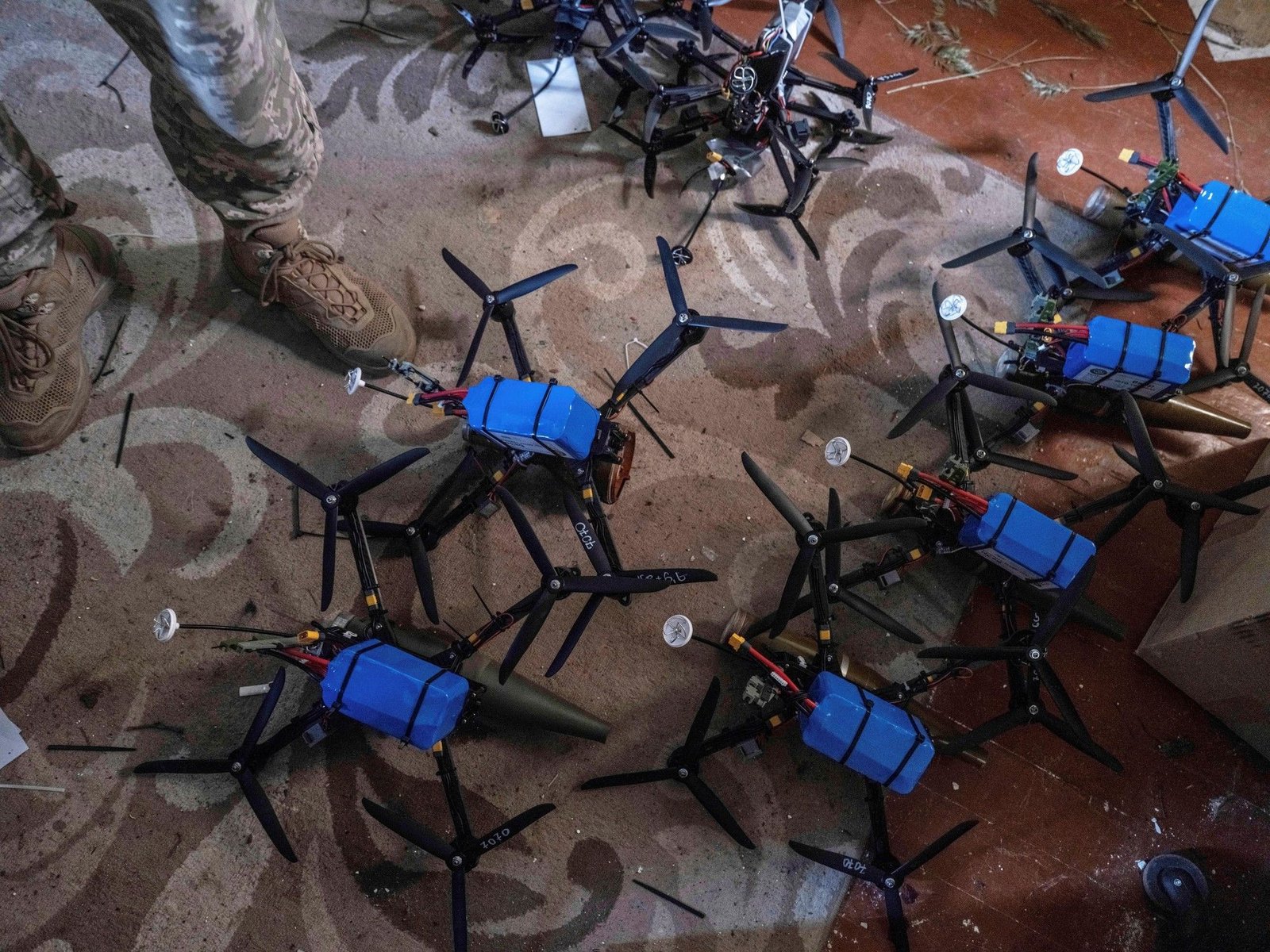
Negociaciones
Reservas
INTERNACIONAL
Oversight chair demands Jean-Pierre, other former WH staff testify on alleged Biden mental decline coverup
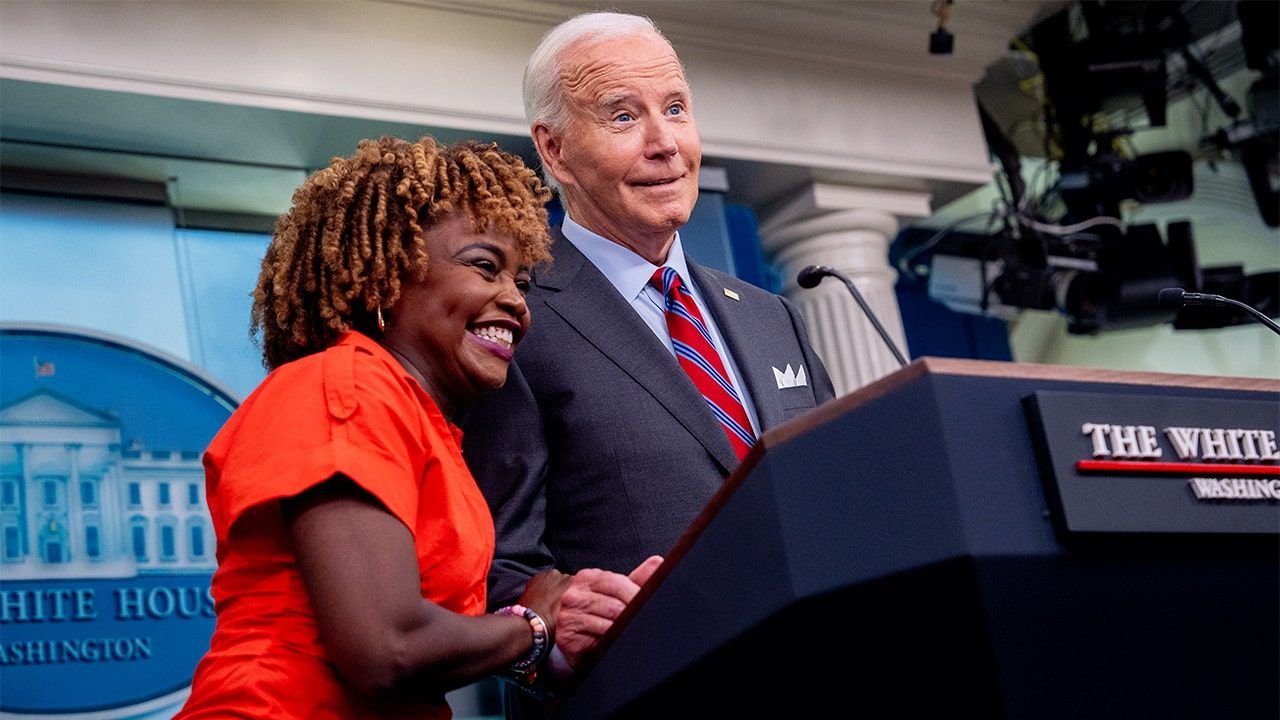
NEWYou can now listen to Fox News articles!
An influential House committee is demanding that former White House press secretary Karine Jean-Pierre and three other former top White House staffers appear before Congress to testify about the alleged cover-up of former President Joe Biden’s mental decline.
Committee on Oversight and Government Reform Chairman James Comer, R-Ky., has been on the hunt for who was making decisions in Biden’s inner circle during the president’s apparent mental decline.
On Friday, he sent letters to Karine-Pierre and former White House chief of staff Jeff Zients, former senior deputy press secretary Andrew Bates and former special assistant to the president Ian Sams, demanding they present themselves for transcribed interviews with the oversight committee.
The letters are part of the committee’s ongoing investigation into the alleged attempted cover-up of Biden’s decline and the potentially unauthorized issuance of sweeping pardons and other executive actions by senior White House officials usurping Biden’s presidential authority.
JILL BIDEN’S ‘WORK HUSBAND’ REFUSES TO TESTIFY ON JOE’S MENTAL DECLINE
Former President Joe Biden, accompanied by former White House press secretary Karine Jean-Pierre, jokes about taking so many questions during a news conference in the Brady Press Briefing Room at the White House Oct., 4, 2024 in Washington, D.C. (Andrew Harnik/Getty Images)
In his letters, Comer says the committee believes that the four top Biden staffers have «critical» information on «who made key decisions and exercised the powers of the executive branch during the previous administration, possibly without former President Biden’s consent.»
The letter to Jean-Pierre stated that as White House press secretary and a top Biden confidante, «you were not only near the president daily, but you were ‘alongside the ranks of the president’s top confidantes.’»
«Your assertion, on multiple occasions, that President Biden’s decline was attributable to such tactics as ‘cheap fakes’ or ‘misinformation’ cannot go without investigation,» wrote Comer.
He said that «if White House staff carried out a strategy lasting months or even years to hide the chief executive’s condition — or to perform his duties — Congress may need to consider a legislative response.»
REP COMER ON A HUNT FOR BIDEN DECISION-MAKER IN THE ADMIN’S ‘INNER CIRCLE’
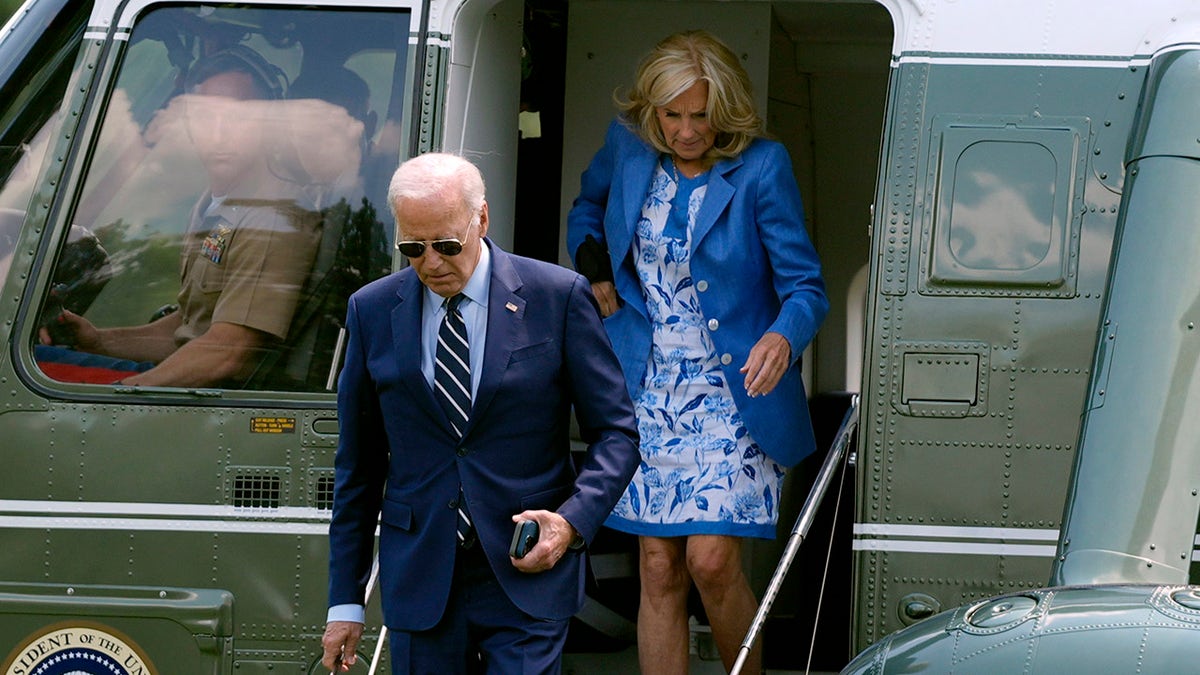
Former President Joe Biden, left, and first lady Jill Biden arrive on Marine One on the South Lawn of the White House Aug. 5, 2024, in Washington. (AP Photo/Evan Vucci)
Comer set interview dates in late August and early September and gave the four senior officials until July 4 to confirm they would comply with the demands voluntarily or if they will «require a subpoena to compel your attendance for a deposition.»
Jean-Pierre, Zients, Bates and Sams are the latest former Biden senior officials to receive a congressional summons from Comer as part of the Oversight Committee’s investigation into the alleged cover-up. The chairman also issued subpoenas to Dr. Kevin O’Connor, Biden’s physician, and Anthony Bernal, former assistant to the president and senior advisor to the first lady, after they refused to appear before the committee voluntarily.
In a statement to Fox News Digital, Comer said that «as part of our aggressive investigation into the cover-up of his cognitive decline and potentially unauthorized executive actions, we must hear from those who aided and abetted this farce.»
EXCLUSIVE: COMER HAILS DOJ’S BIDEN PROBE AS HOUSE INVESTIGATION HEATS UP
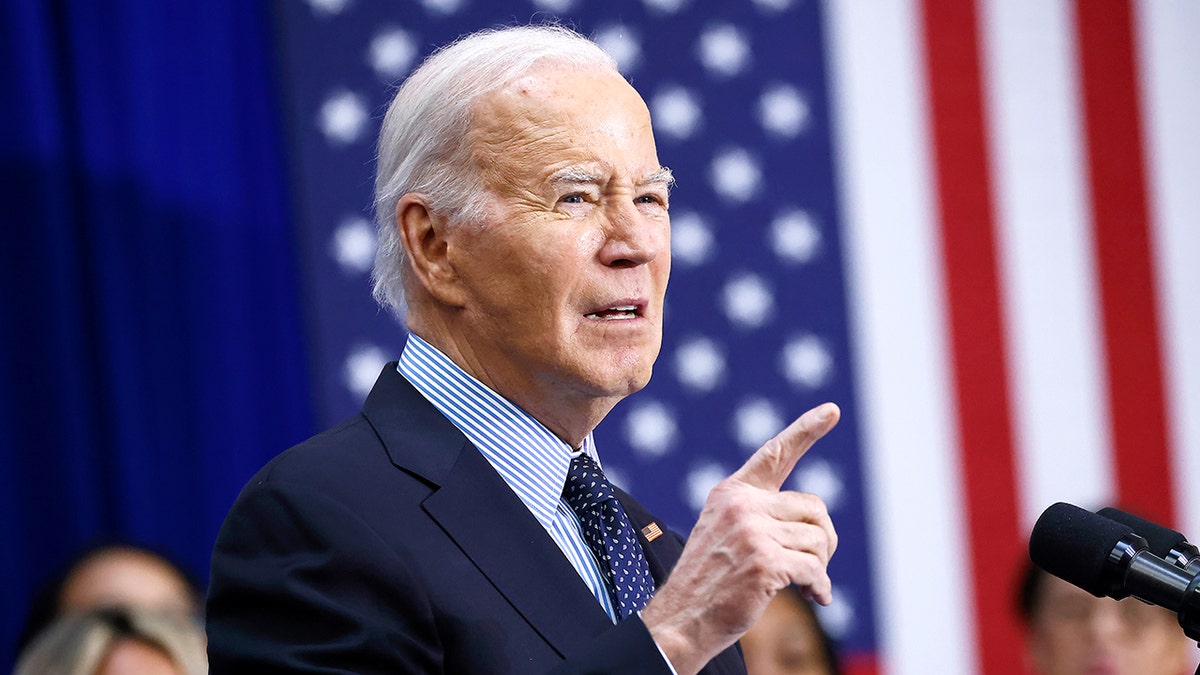
A new book describes President Joe Biden’s cabinet meetings as «scripted» and «uncomfortable.» (Paul Morigi/Getty Images for Care Can’t Wait Action)
CLICK HERE TO GET THE FOX NEWS APP
«President Biden’s inner circle repeatedly told the American people that he was ‘sharp as ever,’ dismissing any commentary about his obvious mental decline as ‘gratuitous,’» he said. «They fed these false talking points to progressive allies and the media, who helped perpetuate that President Biden was fit to serve.»
Jean-Pierre, Zients, Bates and Sams did not reply to Fox News Digital’s request for comment before publication.
INTERNACIONAL
New WHO report fails to rule out COVID-19 lab leak origin as China continues to impede investigation

NEWYou can now listen to Fox News articles!
A World Health Organization (WHO) scientific advisory group on Friday released a report on the origins of COVID-19, concluding that available evidence suggests the deadly pandemic was caused by «zoonotic spillover,» either directly from bats or through an intermediate host.
The report from the Scientific Advisory Group for the Origins of Novel Pathogens (SAGO), which claims to be a panel of 27 independent, international, multidisciplinary experts, said that much of the information needed to fully evaluate all hypotheses has not been provided.
However, still citing a believed cause, WHO Director-General Tedros Adhanom Ghebreyesus said that «all hypotheses must remain on the table, including zoonotic spillover and lab leak.»
Members of the World Health Organization team tasked with investigating the origins of the coronavirus disease arrive at the Wuhan Institute of Virology in Wuhan, China. (Reuters/Thomas Peter. File)
FBI EXAMINING COVID-19 ORIGIN ‘COVER-UP’ AMID NEW STRAIN EMERGENCE: BONGINO
As the Wall Street Journal previously reported, the WHO’s COVID-19 origin findings come amid a pattern of suspicious activity.
The WHO traveled to China in early 2021 with British zoologist Dr. Peter Daszak, who was disbarred last year from doing work for the U.S. Department of Health and Human Services and is accused of using American taxpayer dollars to fund gain-of-function research at the bat lab in Wuhan, China.
Once at the Wuhan lab, Daszak and others were allegedly blocked from doing any of the research necessary to investigate.

Security personnel stand outside the Wuhan Institute of Virology during the visit by the World Health Organization (WHO) team tasked with investigating the origins of the coronavirus disease (COVID-19), in Wuhan, Hubei province, China. (Reuters, File)
DR. MARC SIEGEL: TRUMP IS RIGHT TO BLOCK ‘DANGEROUS’ GAIN-OF-FUNCTION RESEARCH
As noted by the White House when highlighting a report from the Select Subcommittee on the Coronavirus Pandemic, «The Proximal Origin of SARS-CoV-2» publication — which was used repeatedly by public health officials and the media to discredit the lab leak theory — was prompted by Dr. [Anthony] Fauci to push the preferred narrative that COVID-19 originated in nature.
The WHO said it had requested that China share hundreds of genetic sequences from individuals with COVID-19 early in the pandemic, more detailed information about the animals sold at markets in Wuhan, and information on work done and biosafety conditions at laboratories in Wuhan.
To date, China has not shared this information either with SAGO or the WHO.
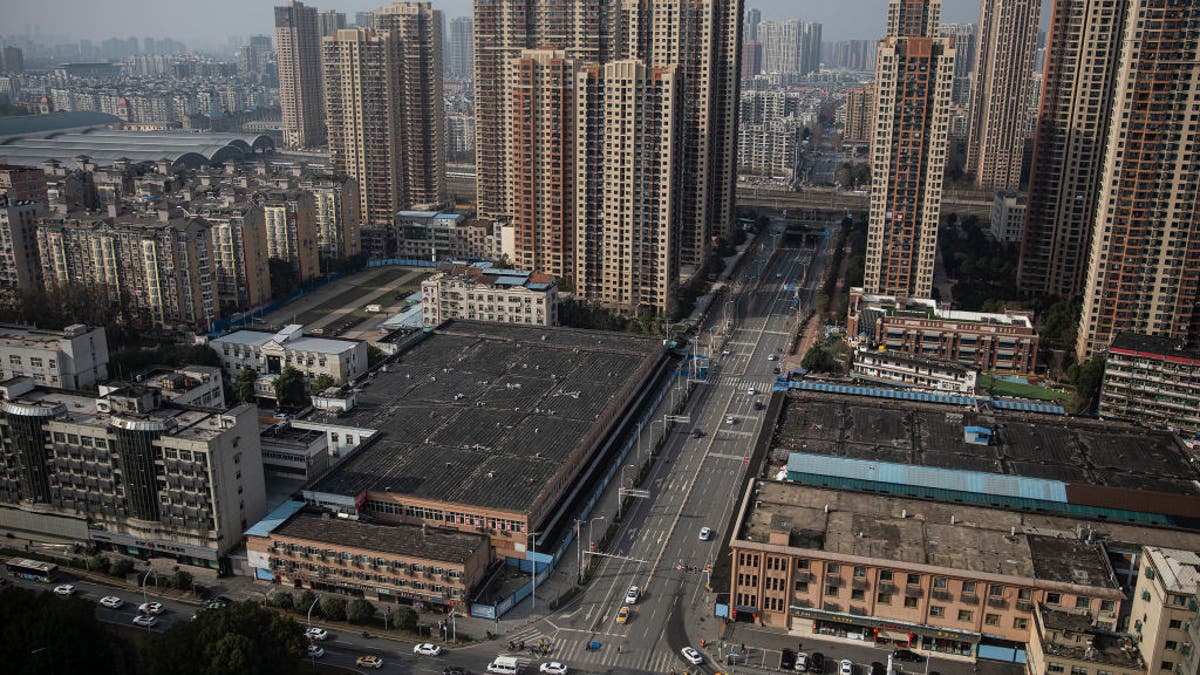
A view of the Huanan seafood market, Feb. 9, 2021, in Wuhan, Hubei Province, China. (Getty Images)
TRUMP BANS FEDERAL FUNDING FOR ‘DANGEROUS’ GAIN-OF-FUNCTION RESEARCH
«I thank each of the 27 members of SAGO for dedicating their time and expertise to this very important scientific undertaking over more than three years,» Ghebreyesus wrote in a statement. «… We continue to appeal to China and any other country that has information about the origins of COVID-19 to share that information openly, in the interests of protecting the world from future pandemics.»
SAGO published its initial findings and recommendations in a report on June 9, 2022. The most recent report updates the evaluation based on peer-reviewed papers and reviews, as well as available unpublished information and field studies, interviews and other reports, including audit findings, government reports and intelligence reports.
Those part of SAGO convened in various formats 52 times, conducted briefings with researchers, academics, journalists and others, according to the WHO.
READ THE FULL REPORT HERE:
«As the report says, this is not solely a scientific endeavor, it is a moral and ethical imperative,» Marietjie Venter, chair of the group, wrote in a statement. «Understanding the origins of SARS-CoV-2 and how it sparked a pandemic is needed to help prevent future pandemics, save lives and livelihoods, and reduce global suffering.»
CLICK HERE TO GET THE FOX NEWS APP
«The work to understand the origins of SARS-CoV-2 remains unfinished,» the WHO wrote in a statement. «WHO welcomes any further evidence on the origins of COVID-19, and SAGO remains committed to reviewing any new information should it become available.»
-

 POLITICA2 días ago
POLITICA2 días agoJavier Milei apuntó duro al Chiqui Tapia por la eliminación de River y Boca: “Le hace mal al fútbol”
-

 POLITICA21 horas ago
POLITICA21 horas agoDesconfianza de los intendentes del PRO sobre el avance de las negociaciones con LLA: “Hasta ahora nadie acercó una propuesta”
-
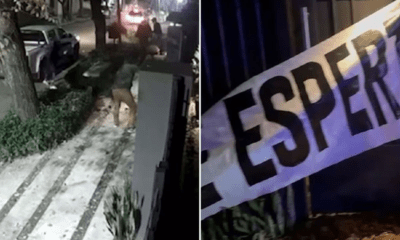
 POLITICA2 días ago
POLITICA2 días agoDetuvieron a una funcionaria del Ministerio de la Mujer bonaerense por el ataque a la casa de José Luis Espert


















